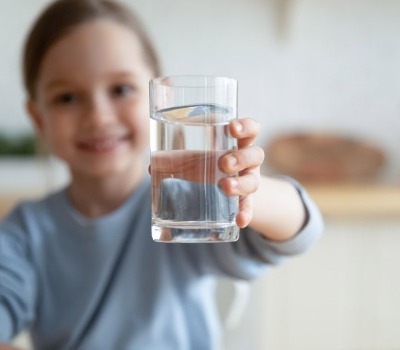A water softener can transform your home’s water quality by providing softer skin, shinier hair, spotless dishes, and longer-lasting appliances. But how does it accomplish these benefits? The process is a sophisticated blend of science and technology, relying on ion exchange to remove hard minerals like calcium and magnesium from your water. Here’s a deep dive into how water softening works and the impact it can have on your home.
How Do Water Softeners Work? A Step-by-Step Guide
Water softeners use an ion exchange process to tackle hard water. This process removes calcium and magnesium, two minerals that are challenging to filter out mechanically, and replaces them with sodium ions. The heart of the water softener is the mineral tank, filled with resin beads charged with sodium ions.
Here’s a breakdown of the steps involved:
- Introduction of Hard Water: Your home’s water supply sends hard water, containing calcium and magnesium, into the water softener’s mineral tank.
- Ion Exchange with Resin Beads: The water flows over the negatively charged resin beads in the tank, which attract the positively charged calcium and magnesium ions. This process strips these hard minerals from the water, replacing them with sodium ions.
- Softened Water Distribution: The softened water, now free of calcium and magnesium, flows out of the tank and into your home’s plumbing system, ready for use in drinking, bathing, cooking, and cleaning.
By removing the minerals that cause water hardness, this ion exchange process can reduce buildup in your pipes, enhance soap lather, and keep your skin and hair feeling softer.
The Water Softener Regeneration Process
Over time, resin beads in the softener become saturated with hard minerals and need to be recharged. Regeneration restores the beads’ effectiveness, enabling them to continue removing hard minerals. The process is automatic and managed by the softener’s control valve, which measures water usage and signals when it’s time to start regeneration.
The regeneration cycle timing depends on factors like:
- Your home’s water hardness
- Number of people in your home
- The softener’s settings and tank size
Steps in the Regeneration Cycle:
- Backwashing: The tank flushes out any dirt and debris.
- Brine Rinse: The brine solution floods the resin tank, where sodium ions displace the accumulated hard minerals, flushing them out.
- Rinsing: Fresh water rinses the resin beads, and the softener resets for the next cycle.
This efficient regeneration process keeps your water softener operating effectively, ensuring consistent soft water flow.
How Does the Brine Tank Work?
The brine tank—the smaller tank next to the mineral tank—holds a concentrated salt solution vital to the regeneration process. Salt added to this tank dissolves, creating a brine that recharges the resin beads when the control valve signals it’s time.
To keep your softener running efficiently, make sure to refill the brine tank in regular intervals, which will vary depending on on your water usage, hardness level, and the quality of your system. Culligan makes the most efficient and smart softeners in the industry, which monitor salt usage and notify you when needed. In many cases, this can be every six months or even longer. Monitoring salt levels will help maintain soft water and avoid lapses in performance.
Benefits of Soft Water for Your Home
Using a water softener can yield significant benefits for your household:
- Softer skin and hair
- Brighter laundry with longer-lasting fabrics
- Improved appliance efficiency
- Fewer clogs and scale buildup in plumbing
FAQs About Water Softeners
How Often Does a Water Softener Regenerate?
Typically, a water softener regenerates every 3-7 days, but this can vary depending on your water use and the system's settings. And while many softeners regenerate on this type of fixed-time interval or based on how much water has flowed through the system, the Smart HE water softener can use Culligan’s proprietary Aqua-Sensor® technology to monitor the softening capacity of the resin and only regenerate as needed, making it more efficient. How often your HE system regenerates depends on your water usage and hardness as well as your system’s capacity.
Can You Use Water During Regeneration?
Most water softeners are programmed to regenerate at night, minimizing impact, though some systems may allow limited water use during regeneration.
How Long Does Regeneration Take?
Regeneration typically lasts between 30-90 minutes, depending on the system type and size. Culligan’s Smart HE systems use proportional brining, which increases efficiency and reduces salt usage by allowing your softener to only regenerate the part of the resin bed that has been exhausted.
With Aqua-Sensor technology, your high-efficiency water softener automatically adjusts to changes in water hardness, which allows it to initiate regeneration only when needed to maximize efficiency. This, along with proportional upflow brining, optimizes salt, water and electricity usage and can decrease operating costs up to 46%.
How Do I Know If My Water Softener is Working?
Signs of effective softening include a noticeable difference in lathering of soap, absence of scale on fixtures, and improvements in skin and hair softness. Regular checks on the brine tank’s salt level also help ensure proper monitoring of performance.
Discover Culligan Water Softeners
Culligan offers many water softener models to suit different needs and budgets, along with salt delivery and professional water testing services. Explore our solutions to improve your water quality—find your nearest Culligan dealer today and start experiencing the benefits of soft water in your home!





